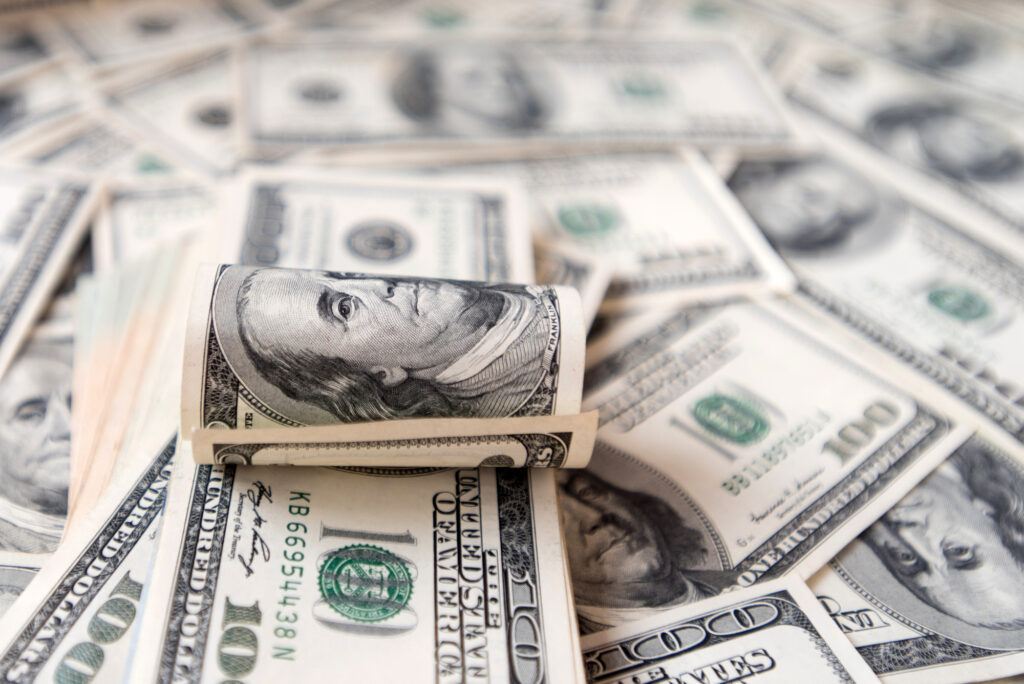To understand the facts at the present time a little better, it is pertinent to provide a little background.
Until 1944, the dollar was based on the gold standard, with a direct relationship between the value of the currency and its convertibility into gold.
From 1944 to 1971, during the validity of the Bretton-Woods agreement, it had been agreed that the dollar would continue to be able to be converted into gold, but losing the direct relationship that existed before, with 35 dollars being established as representing one ounce of gold.
Since 1971, the year in which the Bretton-Woods agreement was suspended, and later, in 1976, when it was effectively terminated, the dollar was no longer convertible into gold, that is, it no longer had an “anchor” to gold and its respective rate. exchange rate is no longer “fixed”.
Now, from 1971 onwards, we entered the world of fractional reserves and “quantitative easing”, which, in a cheesy way, means “printing money”, and a “Turbo Powered” financial system was created to provide liquidity to the furor and growth of the markets.
In my opinion, the fall of the Bretton-Woods was largely due to the oil crises and the fact that more dollars were needed to pay for oil, which had become more expensive. And, given the growing demand for petroleum products, such as fuel, more dollars were needed in circulation to fuel this new black gold economy.
To attest to the furor of “quantitative easing” that followed the end of Bretton-Woods, we can observe the statistical data from FRED (Federal Reserve Economic Data, from the United States of America), where, between the beginning of the data series fixed in 1917 and 1944, there was an increase of 16 billion dollars, and, between 1944 and 1971 (which was the period in which the Bretton- Woods), there was an increase of 35 billion dollars in circulation.
In the following years, where there would no longer be an “anchor” for gold, depending only on the country's monetary policy, and to maintain coherence, considering identical periods of years, that is, from 1971 to 1998 there was an increase of 418 billion dollars , and in the following 26 years (to date), there has been an increase of 1 billion dollars.
The dollar then became the standard currency for international oil transactions, that is, anyone who wanted to purchase oil would have to do so using dollars, considerably increasing the demand for this currency.
Recently, the dollar's reign in oil transactions ended when, in July 2023, India purchased oil using Chinese Yuan to make the payment and not dollars.
In October 2023, China also purchased oil using Chinese Yuan for payment. This has been the result of a pressing effort by China in Riyadh to accept more and more transactions in this currency.
Within the BRICS, which is an organization made up of a group of emerging market countries, dominated by Russia, China, India and Brazil, they are actively talking about using the Chinese Yuan as the reference currency in commercial transactions to the detriment of the US dollar.
At the same time, we can witness the frenzy of international buzz about Saudi Arabia's accession to BRICS+, which, despite not having happened yet, is in an advanced stage of negotiations.
Additionally, between 2022 and 2024, we see a strong slowdown in the introduction of new dollars into circulation, in relative terms, which could be an attempt to respond to the rise in inflation in the USA, due to the possible slowdown in demand for dollars and consequent loss of value of the currency on the international market.
Having said that, I leave two questions in the air: will this be the final ax that will begin the decline of the dollar as the reference currency in international transactions? Will this be the catalytic event for mass adoption of a cryptocurrency?
Author Luis da Ponte is an effective member of the Order of Economists.
He has a degree in Business Management and a postgraduate degree in Corporate Finance from the University of Algarve and a degree in Public Administration from the University of Minho.
Professionally, he is the owner of the companies “VDP – Consultoria | Insurance” and “TSE Industrial”.
Note: article published under the protocol between the Sul Informação and the Algarve Delegation of the Order of Economists



















Comments